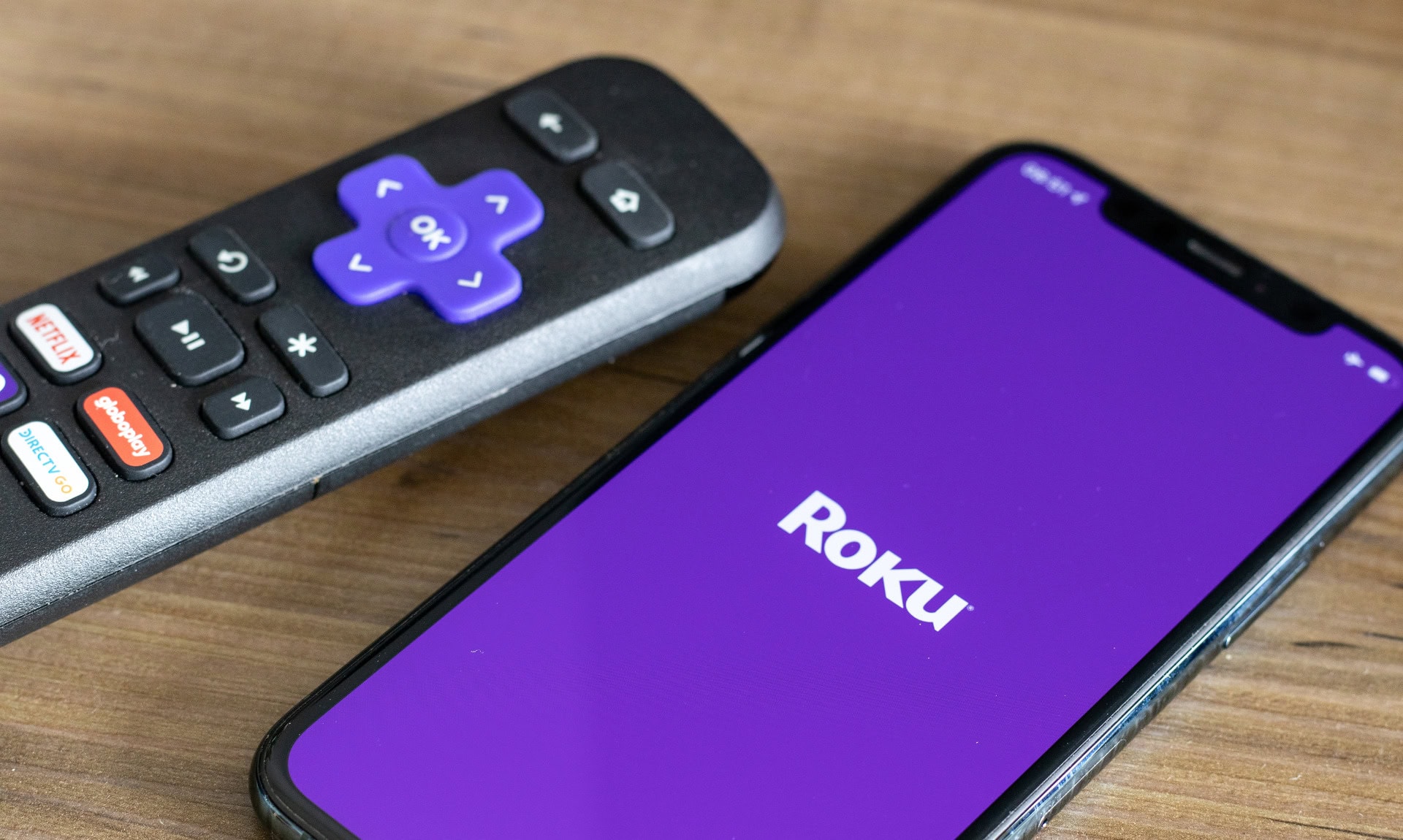
Roku Advertising in 2024: Complete Guide for Marketers
Roku advertising has become a pivotal tool for marketers in 2024, offering precision targeting and high engagement rates. Utilizing the Roku Ads Manager, businesses can efficiently manage their ad campaigns, optimizing costs and boost performance.
This comprehensive guide explores the benefits, strategies, and detailed insights on Roku advertising, including costs, ad types, and best practices for leveraging this powerful platform.
What Is Roku Advertising?
Roku advertising leverages the streaming platform’s extensive user base to deliver targeted ads to viewers.
It includes various ad types such as video ads, interactive ads, and branded channel placements, all managed through the Roku Ads Manager. This approach allows advertisers to reach a younger, highly engaged audience with precise targeting and detailed performance analytics.
Benefits of Roku Advertising
Roku advertising offers several advantages that can significantly enhance your marketing efforts. Its primary benefits are:
1. Precision Targeting
Roku’s advanced targeting capabilities allow advertisers to reach specific audience segments based on demographics, interests, and viewing behaviors. This precision reduces wasted ad spend and increases the likelihood of reaching potential customers who are more likely to engage with the brand.
2. Elevated Engagement Rates
Roku ads achieve higher engagement rates due to their placement within premium content, capturing viewers’ attention more effectively than traditional television advertising. The interactive elements and visually appealing formats of Roku ads further encourage viewer interaction, leading to better brand recall and conversion rates.
3. Premium Content Placement
Roku’s connected TV ads are integrated into high-quality, popular streaming content, providing a seamless viewing experience that enhances brand perception and recall. This premium placement means ads are viewed in a context that consumers trust and enjoy, increasing the overall impact and effectiveness of the advertising.
4. Reach a Younger Audience
Roku’s platform is particularly popular among younger demographics, enabling advertisers to connect with a tech-savvy, hard-to-reach audience that is less accessible through linear TV advertising. This audience is often more receptive to digital advertising and more likely to engage with brands online.
5. Detailed Analytics and Reporting
Roku offers comprehensive analytics and reporting tools for CTV measurement, allowing advertisers to track campaign performance, measure ROI, and make data-driven adjustments for optimal results. These insights provide a clear understanding of viewer behavior and ad effectiveness, enabling continuous improvement and more efficient use of OTT advertising budgets.
How Does Roku Advertising Work?
Roku advertising leverages the platform’s extensive device penetration, reaching millions of users through its streaming service. Advertisers can create and manage ad campaigns via the Roku Ads Manager, choosing from various ad formats and targeting specific audience segments. With access to a vast user base, marketers can place programmatic ads within premium content, ensuring high visibility and engagement. Detailed analytics and reporting tools help track performance and optimize campaigns for better results.
Roku Ads Manager, Explained
Roku Ads Manager is a self-service CTV advertising platform designed to help businesses create, manage, and optimize their ad campaigns on Roku. It provides an intuitive interface for setting up ads, targeting audiences, and tracking performance.
Some features of the Roku Ads Manager include:
- Targeting Options: Allows precise targeting based on demographics, interests, and viewing behaviors to reach specific audience segments.
- Budget Control: Offers flexible budgeting options to manage ad spend effectively, ensuring cost-efficient campaigns.
- Real-Time Analytics: Provides real-time data and insights to track campaign performance and make data-driven adjustments.
- Creative Flexibility: Supports various ad formats, enabling creative flexibility to tailor ads to different campaign goals.
- Geographic Targeting: Enables advertisers to target audiences based on specific locations, enhancing local TV advertising campaigns.
Types of Roku Ads
Roku offers various ad types to suit different marketing needs and viewer experiences. Here are some of the ads marketers can take out on the Roku platform:
Native Ads
Native ads seamlessly integrate with Roku’s interface, providing a non-disruptive experience.
- Roku City: Customizable screensaver ads that engage users when they are not actively watching content.
- Themes: Ads that allow brands to sponsor Roku home screen themes, creating a branded visual experience.
- Spotlight Ad: High-visibility ads placed prominently on the Roku home screen to capture immediate attention.
- Marquee Ad: Large-format ads displayed on the Roku home screen, offering premium visibility.
- Banner Ad: Horizontal ads placed on various Roku interface screens, offering consistent brand presence.
- Tile: Ads embedded within the content grid, blending with the viewing options for subtle promotion.
Destinations
Destinations offer branded spaces within Roku, creating immersive brand experiences.
- Playlists: Curated content collections sponsored by brands to engage viewers with thematic video selections.
- Passes: Bundled content access provided by brands, offering viewers a limited-time, themed viewing experience.
- Zones: Dedicated sections within Roku that feature specific genres or themes, sponsored by advertisers.
- Details Page (for Branded Entertainment): Branded pages that provide additional information and content related to sponsored shows or channels.
Video Ads
Video ads engage viewers with compelling visuals within streaming content.
- Standard Video Ad: Traditional non-skippable video ads that appear before, during, or after ad-supported content.
- Takeover Pod: A series of ads from a single brand, dominating the ad break to ensure viewer retention.
- Custom Vignette: Short, branded content pieces designed to fit seamlessly with the viewing experience.
- Tagged Vignette: Branded vignettes with additional messaging or calls to action integrated into the content.
- Watch Along: an original, short-form content segment that appears during the ad breaks of a selected film as part of a Movie Pass sponsorship.
- Pause Ad: Ads displayed when viewers pause the content, offering a non-intrusive advertising opportunity.
- Tune-in Reminder: Ads reminding viewers about upcoming shows or events, encouraging tune-ins.
Action Ads
Action ads encourage direct interaction from viewers.
- OK-to-Text: Engage viewers with a clickable overlay that sends a link via text for offers, purchase points, or product details.
- OK-to-Email: Engage viewers with a clickable overlay that sends a link via email for offers, purchase points, or product details.
- OK-to-Locate: This feature, added to OK-to-Text, sends a text with details on the nearest brand location and a URL pointing to a map with directions.
- Scannable Video: Include an action-oriented QR code in your ad to drive purchases, special offers, or sign-ups, maintaining a seamless viewing experience.
- OK-to-Checkout: Enable viewers to browse and purchase products fulfilled by Walmart or Shopify directly on their Roku devices.
- In-Content Overlays: Promote your product within a Roku Original show or film to drive purchases.
- Interactive Custom Vignette: Showcase your product and simplify the checkout process, creating a seamless path to purchase.
- OK-to-Remind: A clickable overlay on your video ad that prompts viewers to set a reminder for an upcoming release.
- OK-to-Install: A clickable banner appended to your video ad, allowing users to instantly download your app on Roku.
- OK-to-Subscribe: Similar to OK-to-Install, this unit appended to a channel partner’s Roku video ad enables users to sign up for a Free Trial or Subscription.
- OK-to-Save: A clickable overlay appended to a video ad, allowing users to save your content to their “Save List” for later viewing.
How To Advertise on Roku
Advertising on Roku involves a straightforward process through the Roku Ads Manager.
Step 1. Log In to Your Roku Ads Manager Account
Log in to your Roku Ads Manager account to access the dashboard. Ensure your account is set up with the necessary billing and contact information.
Step 2. Define Your Campaign Details and Budget
Set your campaign objectives, duration, and budget. Clearly outline what you aim to achieve with your campaign and allocate your budget accordingly.
Step 3. Choose Your Target Audience
Select your target audience based on demographics, interests, and viewing habits. This helps in ensuring your ads reach the most relevant viewers.
Step 4. Upload Your Video
Upload your ad creative, ensuring it meets Roku’s specifications. Preview the video to confirm it displays correctly and adheres to quality standards.
- Learn More: CTV Video Ad Specs & Formats: Complete Guide
Step 5. Measure Your Performance
Use Roku’s analytics tools to track your ad performance. Monitor key marketing metrics such as impressions, click-through rate, and conversions to optimize future campaigns.
Who Can Advertise on Roku?
Assuming your ad complies with Roku’s advertising guidelines, businesses of all sizes can advertise on Roku, from small local companies to large multinational corporations.
The connected TV platform is suitable for a wide range of industries, including retail, entertainment, automotive, finance, and more. Advertisers looking to reach a diverse and engaged audience through streaming services can leverage Roku’s advanced targeting and analytics capabilities to achieve their marketing goals.
Roku Advertising Costs, Explained
Advertising on Roku is budget-friendly, with a minimum campaign spend currently set at $500.
The more you invest, the broader your reach and the greater your chances of driving conversions. For newcomers, it’s advisable to start with a smaller budget to test the platform’s effectiveness.
Factors that influence the cost of Roku ads include:
- Ad Format: Costs vary between formats such as video ads, native ads, and action ads, each with unique engagement potential.
- Target Audience: More precise targeting based on demographics and behaviors can increase costs.
- Seasonality: Advertising during high-demand periods, like holidays, tends to be more expensive.
- Campaign Length and Frequency: Longer campaigns and higher ad frequencies generally require a larger budget.
- Geographical Targeting: Focusing on specific regions or markets can influence the overall cost, with localized campaigns often costing more.
Related: How Much Does It Cost to Make a Commercial?
Roku Ads Best Practices
To maximize the effectiveness of your Roku ads campaign, follow these best practices and strategies:
- Define Clear Objectives: Establish specific goals for your campaign to guide your strategy and measure success.
- Target Accurately: Utilize Roku’s advanced targeting options to reach the most relevant audience segments based on demographics and viewing behaviors.
- Optimize Ad Creative: Ensure your ads have high-quality visuals and compelling messaging to capture viewer attention and drive engagement.
- Utilize Multiple Formats: Combine different ad types, such as video and interactive ads, to enhance viewer engagement and reach.
- Monitor and Adjust: Regularly review analytics to track performance and make data-driven adjustments to optimize your campaigns.
- Leverage Seasonality: Plan your campaigns around high-traffic periods to maximize visibility and impact.
- Test and Iterate: Start with a smaller budget to test ad performance, then scale up based on the results to ensure cost-effective spending.
Advertising on Roku: Final Thoughts
Roku advertising in 2024 offers a powerful platform for reaching a diverse and engaged audience. By leveraging the Roku Ads Manager, marketers can create targeted campaigns, utilize various ad formats, and monitor performance with detailed analytics. With cost-effective options and comprehensive tools, Roku ads enable businesses to connect with younger demographics and achieve their marketing goals effectively.
News Via Inbox
Get our monthly report on all the latest and greatest trends in digital marketing.



